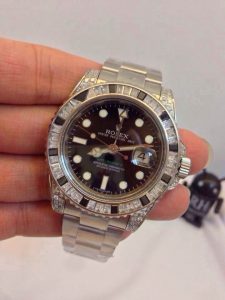Manufactured In-House Rolex Materials Guide
As for timepieces and watches, “made by oneself” is a name that plays an important role in the whole industry. When exact replica watches are made in-house, companies often have more control over the design and production process. While many companies produce their own sports, Rolex is one of the few to take the “in-house” label further, and there are actually many proprietary Rolex materials that the brand produces entirely in-house.
Rolex owns and operates its own foundry that produces all of the gold, platinum, and stainless steel alloys that are used in its watches. This ensures that the material outside the watch is constantly exposed to the air only to the highest level of quality and durability.
Today, the large majority of manufacturers use 316L stainless steel for their watches; however, Rolex now exclusively uses a particular blend of 904L stainless steel – officially known as Oystersteel, which is harder and more corrosion resistant due to higher levels of chromium, molybdenum, nickel, and copper. Just like Rolex’s specially engineered gold alloys, Oystersteel is manufactured entirely in-house to ensure that it meets the brand’s impeccably high standards.
These highly-specialized proprietary Rolex materials range from greatly durable ceramic compounds, to specially formulated luminous paint. Beyond the metal alloys that make up the outer case and bracelets of its watches, Rolex also creates a number of technologically advanced materials that are used both inside and outside of its watches.
One of the more-noticeable Rolex materials is the blue luminescent paint used on the hands and hour markers of many newer Rolex replica watches. In 2008, Rolex announced its own proprietary luminescent material known as Chromalight. While it boasts a slightly longer glow time than its predecessor, the most obvious change has been the striking blue glow that it brings to the faces of many new Rolex models, rather than the green-colored glow found on older references. 
The “in-house” designation generally implies that a company has mastered that specific aspect of production. Throughout history, Rolex has repeatedly found itself constrained by the physical limitations of available materials. Instead of accepting these restrictions, Rolex invented new materials that allowed them to continue pushing the boundaries of tabulation.
